Mobile Apps State Technology in 2025: Inspiring Innovations, Use Cases, and Industry Leaders
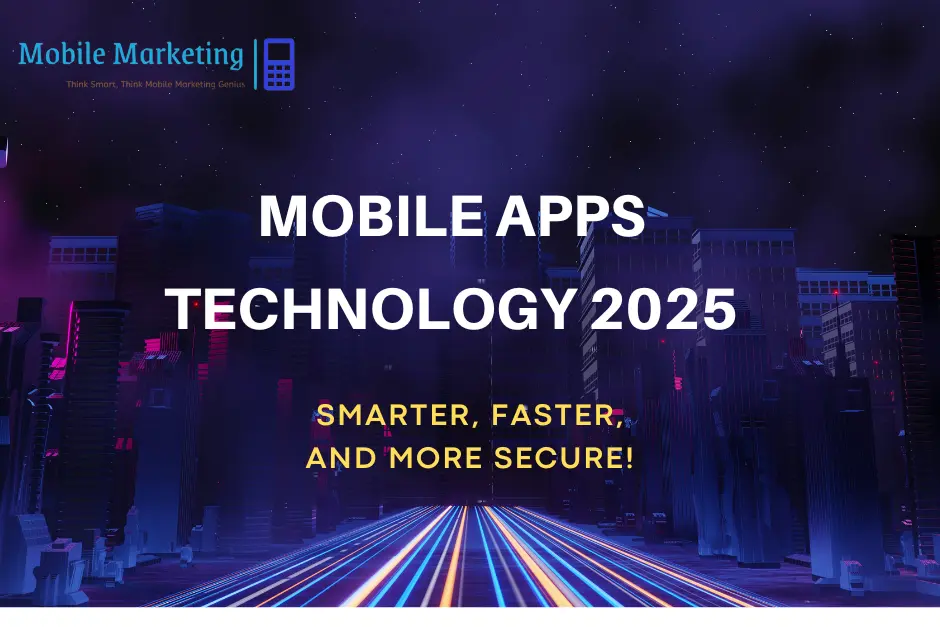
Mobile applications have become the backbone of the digital world, revolutionizing industries from healthcare and finance to entertainment and smart cities. As we enter 2025, Mobile Apps State Technology is undergoing a dramatic transformation, driven by advancements in 6G networks, artificial intelligence (AI), augmented reality (AR), blockchain security, and the Internet of Things (IoT). These technologies are not just enhancing mobile app performance but are also reshaping user experiences, security, and accessibility like never before.
The integration of AI-powered mobile assistants, AR-based shopping and gaming experiences, and blockchain-secured financial transactions is making mobile apps more intelligent, secure, and immersive. Meanwhile, the expansion of wearable technology is enabling mobile apps to offer real-time health monitoring and personalized fitness solutions, bridging the gap between technology and well-being. Additionally, sustainable and green mobile app innovations are gaining momentum, promoting energy efficiency and reducing digital carbon footprints.
This article delves into the key innovations shaping Mobile Apps State Technology in 2025, providing real-world use cases, industry leaders, and future trends. As mobile applications continue to evolve, understanding these advancements will be essential for businesses, developers, and users looking to stay ahead in the rapidly shifting digital landscape.
Table of Contents
The 6G Revolution: Transforming Mobile Apps Performance
The mobile industry is on the brink of a major transformation with the emergence of 6G technology, set to revolutionize mobile applications in 2025 and beyond. As the successor to 5G, 6G promises ultra-fast speeds, near-zero latency, AI-driven automation, and enhanced connectivity, making mobile apps more efficient, immersive, and intelligent. With its ability to support terahertz (THz) frequencies and ultra-low latency, 6G will unlock new possibilities for mobile applications, ranging from real-time gaming and interactive AR experiences to AI-powered automation and decentralized mobile ecosystems.
1. Unprecedented Speed and Efficiency for Mobile Apps
One of the biggest advancements of 6G technology is its blazing-fast data speeds, projected to reach up to 1 terabit per second (Tbps)—a 100x increase compared to 5G. This massive speed boost will significantly enhance the performance of mobile applications, enabling:
- Instantaneous app downloads and updates, reducing wait times for users.
- Real-time data processing, making mobile AI apps more responsive.
- Seamless cloud gaming and VR experiences without lag or buffering.
Additionally, 6G’s ultra-low latency, estimated to be less than 1 millisecond, will allow mobile apps to function in real-time, reducing delays in applications that require fast response times, such as autonomous vehicle controls, healthcare monitoring, and smart city infrastructure.
2. New Possibilities for Mobile Apps with 6G
With its advanced capabilities, 6G will pave the way for next-generation mobile applications, expanding the possibilities of AR/VR, AI-driven automation, and real-time collaboration. Key innovations include:
- Holographic Communication – 6G-powered mobile apps will enable real-time 3D holographic calls, transforming virtual meetings, gaming, and social interactions.
- Ultra-Responsive AR & VR Applications – 6G will enhance augmented reality (AR) and virtual reality (VR) apps, making them more immersive, with hyper-realistic graphics and real-time processing.
- AI-Powered Automation – The integration of AI with 6G will allow mobile apps to automate tasks in real-time, including voice assistants, predictive analytics, and smart home applications.
These innovations will redefine user experiences and make mobile apps an integral part of everyday life, business operations, and entertainment.
3. Industry Leaders Driving 6G Innovation
Leading tech companies and research institutions worldwide are investing heavily in 6G development, setting the foundation for its global deployment by 2030. Some of the pioneers in 6G innovation include:
- Samsung – Researching terahertz (THz) frequencies and AI-powered networks to boost mobile connectivity.
- Huawei – Developing 6G prototypes and exploring AI-integrated 6G networks for better automation.
- Nokia & Ericsson – Partnering with governments and telecom providers to test 6G applications and expand mobile infrastructure.
- Qualcomm – Leading 6G chipset innovation, ensuring compatibility with future mobile apps and devices.
These companies are laying the groundwork for a 6G-powered mobile future, enabling a new era of app development and digital experiences.
The arrival of 6G technology will revolutionize the state of mobile applications, unlocking unprecedented speed, enhanced automation, and new app functionalities. As the mobile industry prepares for this next evolution, developers, businesses, and consumers must adapt to a future where 6G-driven apps redefine how we interact, work, and experience digital content. Mobile Apps State Technology in 2025 will be faster, smarter, and more immersive, setting the stage for the next era of mobile connectivity and innovation.
AI-Powered Mobile Apps: Enhancing Personalization and Automation
Artificial Intelligence (AI) is reshaping mobile applications by making them more intelligent, intuitive, and responsive. As AI technology advances in 2025, mobile apps are becoming more than just tools—they are evolving into smart assistants capable of learning user behavior, predicting needs, and automating tasks in real time. From personalized recommendations to AI-driven automation and voice-based interactions, AI is redefining user experiences across multiple industries.
1. Hyper-Personalization: AI Learning and Adapting to User Behavior
AI-driven mobile apps are leveraging machine learning (ML) algorithms and big data analytics to offer hyper-personalized experiences tailored to each user’s preferences. This transformation enables:
- Customized content recommendations in streaming apps like Netflix, YouTube, and Spotify based on user history.
- Personalized e-commerce experiences where apps like Amazon and Shopify suggest products based on shopping behavior.
- Smart fitness and health tracking in apps like MyFitnessPal and Apple Health, adjusting workout and diet plans based on real-time data.
By analyzing user patterns and preferences, AI-powered apps deliver relevant content, improve engagement, and enhance customer satisfaction, making interactions smarter and more seamless.
2. AI-Driven Automation: Redefining Efficiency and Productivity
AI is revolutionizing mobile automation, enabling apps to perform complex tasks with minimal user input. From customer service chatbots to smart scheduling assistants, AI-powered automation is reducing manual effort and boosting efficiency. Key areas where automation is transforming mobile apps include:
- AI Chatbots and Virtual Assistants – Apps like Google Assistant, Siri, and Alexa offer voice-activated services, automate tasks, and provide instant responses.
- AI-Based Productivity Apps – Apps like Grammarly, Otter.ai, and Microsoft Copilot automate tasks like document editing, speech-to-text conversion, and meeting summarization.
- Smart Home and IoT Integration – AI-driven mobile apps control smart home devices, adjusting lighting, temperature, and security systems through automation.
With AI-driven automation, mobile apps are evolving into digital co-pilots that anticipate user needs and improve daily efficiency.
A report from Markets and Markets (2024) predicts that the AI-powered mobile apps market will grow at a CAGR of 32.5% from 2023 to 2030, driven by advancements in AI assistants, predictive analytics, and personalized automation.
3. Industry Leaders Driving AI Integration in Mobile Apps
Tech giants and AI innovators are pushing the boundaries of mobile AI, developing smarter, more efficient applications. Key players leading this revolution include:
- Google – Developing AI-powered search, voice recognition, and predictive text technology in mobile apps.
- Apple – Advancing AI-powered Siri, facial recognition, and machine learning frameworks for iOS apps.
- OpenAI – Powering AI-driven chat applications like ChatGPT, enhancing customer service, and knowledge retrieval.
- Meta (Facebook & Instagram) – Leveraging AI for personalized social media experiences, targeted ads, and content recommendations.
These companies are setting the stage for a new era of AI-driven mobile apps, ensuring that apps learn, adapt, and automate tasks seamlessly.
AI-powered mobile apps are transforming user experiences by enhancing personalization and automating tasks in unprecedented ways. By learning from user behavior, predicting preferences, and streamlining processes, AI is making mobile applications more intuitive, efficient, and engaging. As AI technology continues to advance, mobile apps in 2025 will become smarter, more predictive, and more personalized, ensuring a seamless digital experience across industries and daily life.
Augmented Reality (AR) & Virtual Reality (VR) Integration in Mobile Apps
Augmented Reality (AR) and Virtual Reality (VR) are redefining mobile applications, creating more immersive and interactive experiences across industries. In 2025, AR and VR integration in mobile apps is advancing beyond gaming, expanding into retail, education, healthcare, and remote work solutions. With the rise of 6G connectivity, AI-powered interactions, and more powerful mobile processors, AR and VR applications are becoming more accessible, efficient, and engaging.
1. Immersive Mobile Experiences: The Next Level of Interaction
AR and VR technologies are blurring the lines between the digital and physical worlds, offering interactive and engaging mobile experiences like never before. Mobile apps are now integrating these technologies to:
- Enhance shopping experiences – Apps like IKEA Place and Sephora Virtual Artist allow users to visualize furniture or makeup in real-time before purchasing.
- Revolutionize gaming and entertainment – Games like Pokémon GO, Minecraft Earth, and VRChat provide interactive, location-based AR/VR experiences.
- Create social AR filters and avatars – Platforms like Instagram, Snapchat, and TikTok use AR lenses and face filters to enhance user engagement.
By making mobile apps more dynamic, interactive, and visually engaging, AR and VR are elevating user experiences across various applications.
2. AR & VR in Key Industries: Expanding Beyond Gaming
While gaming has been the primary driver of AR and VR adoption, mobile applications in multiple industries are now leveraging these technologies for enhanced engagement and functionality. Key industry applications include:
- Retail & E-Commerce – Apps like Amazon AR View let customers preview products in their homes before buying, improving online shopping experiences.
- Healthcare & Telemedicine – VR-powered apps like Osso VR and XRHealth assist in medical training, remote therapy, and pain management.
- Education & Training – Apps like Google Expeditions and Unimersiv provide interactive AR/VR learning experiences, making education more engaging and hands-on.
These applications demonstrate how AR and VR mobile apps are revolutionizing industries, enhancing productivity, customer experiences, and innovation.
3. Key Players Driving AR & VR Innovation in Mobile Apps
Leading tech giants and startups are investing heavily in AR and VR mobile app development, ensuring wider adoption and enhanced functionalities. Some of the biggest contributors include:
- Meta (Facebook Reality Labs) – Advancing VR for social interactions, workspaces, and gaming with the Meta Quest ecosystem.
- Apple – Driving AR integration in iPhones and iPads with ARKit, along with innovations like the Apple Vision Pro for spatial computing.
- Google – Pioneering ARCore for Android devices, allowing developers to create interactive AR apps for retail, education, and mapping.
- Microsoft – Pushing mixed reality with HoloLens, integrating AR for industrial applications and remote collaboration.
These companies are shaping the future of AR and VR mobile apps, making immersive experiences more accessible, functional, and widely adopted.
AR and VR integration in mobile applications is revolutionizing user engagement and industry solutions, making digital experiences more interactive, immersive, and visually stunning. With advancements in hardware, AI, and network connectivity, AR and VR apps are expanding beyond entertainment into retail, healthcare, education, and business applications. As AR and VR mobile apps continue to evolve, they will transform how we shop, learn, work, and interact in the digital world, setting the stage for a more immersive and connected future.
Blockchain for Mobile Apps Security and Decentralized Transactions
With the increasing reliance on mobile applications for financial transactions, identity verification, and digital ownership, security and data integrity have become top priorities. Blockchain technology is emerging as a game-changer in mobile security and decentralized transactions, providing tamper-proof data storage, transparent operations, and enhanced privacy protections. In 2025, blockchain-powered mobile apps are enabling safer, decentralized, and more user-controlled digital experiences across industries.
This section explores how blockchain is revolutionizing mobile app security, with a focus on immersive mobile experiences, real-world use cases, and the key players shaping this evolution.
1. The Rise of Blockchain in Mobile Security and Decentralized Transactions
As mobile apps handle sensitive user data, payments, and digital assets, traditional security measures like passwords and centralized databases are proving insufficient against hacking, fraud, and data breaches. Blockchain technology is transforming mobile security by offering:
- Decentralized authentication – Eliminating the need for password-based logins through blockchain-based identity verification.
- Tamper-proof transaction records – Securing mobile payments, smart contracts, and crypto transactions against fraud.
- Increased transparency – Enabling verifiable and immutable transactions in mobile finance and digital contracts.
By removing centralized control, blockchain ensures greater trust, security, and data ownership, making it an ideal solution for mobile financial apps, digital ID verification, and secure messaging.
2. Use Cases: Blockchain-Powered Mobile Apps Across Industries
Blockchain is revolutionizing multiple industries by enhancing security, decentralization, and transparency in mobile applications. Some of the key use cases include:
- Secure Mobile Payments & Crypto Wallets – Apps like Binance, Coinbase, and Trust Wallet enable users to store, send, and receive digital currencies securely.
- Decentralized Finance (DeFi) Apps – Platforms like MetaMask and Aave allow users to access financial services without intermediaries.
- NFT and Digital Ownership – Apps like OpenSea and Rarible enable buying, selling, and trading digital collectibles through blockchain-powered mobile marketplaces.
- Blockchain-Based Messaging & Cloud Storage – Apps like Status and Sia provide secure, encrypted communication and decentralized data storage, preventing unauthorized access.
These applications demonstrate how blockchain is making mobile apps safer, more transparent, and less dependent on centralized entities.
A report by PwC (2023) estimates that blockchain-powered mobile transactions will surpass $2 trillion in global value by 2025, largely driven by decentralized finance (DeFi) and cryptocurrency-based mobile payments.
3. Key Players Driving Blockchain Adoption in Mobile Apps
Several tech companies and blockchain innovators are pioneering the integration of blockchain technology in mobile applications, ensuring enhanced security and decentralized transactions. Some of the key players include:
- Binance & Coinbase – Leading the development of crypto-based mobile wallets and trading platforms.
- Visa & Mastercard – Innovating blockchain-powered payment solutions to enhance mobile transactions.
- IBM & Microsoft Azure Blockchain – Providing enterprise blockchain solutions for mobile security and authentication.
- Meta & Apple – Exploring blockchain-based authentication and digital identity verification for their ecosystems.
These industry leaders are pushing blockchain’s capabilities in mobile applications, setting the stage for a more secure and decentralized digital future.
As mobile applications continue to evolve, blockchain is becoming a critical technology for security, privacy, and decentralization. From crypto payments and DeFi platforms to NFT marketplaces and secure messaging, blockchain-powered mobile apps are transforming how users interact, transact, and store data. In 2025, blockchain will play a key role in safeguarding mobile ecosystems, ensuring trust, transparency, and data sovereignty for users worldwide.
Wearable Tech and Mobile Apps: A New Era of Connected Devices
The integration of wearable technology and mobile applications is reshaping how users interact with digital devices, bringing a new level of convenience, real-time monitoring, and personalized experiences. In 2025, smartwatches, fitness trackers, smart glasses, and bio-sensing wearables are evolving beyond simple health tracking to offer advanced biometric data, AI-driven insights, and seamless connectivity with mobile apps. With the rise of 5G, AI, and IoT, wearable devices are becoming smarter, more responsive, and deeply integrated into daily life, impacting industries from healthcare and fitness to productivity and entertainment.
This section explores how wearable tech is transforming mobile applications, highlighting enhanced health tracking, smart assistants and automation, and the key players shaping this revolution.
1. Enhanced Health Tracking and Bio-Sensing Capabilities
One of the most significant advancements in wearable technology is real-time health monitoring, allowing users to track their vital signs, physical activity, and overall wellness through mobile apps. Some key developments include:
- ECG and Blood Oxygen Monitoring – Smartwatches like the Apple Watch and Fitbit Sense now feature electrocardiogram (ECG) sensors, blood oxygen (SpO2) monitoring, and sleep tracking.
- Wearable Glucose Monitoring – Devices like Dexcom G6 sync with mobile apps to provide continuous glucose tracking for diabetes management.
- AI-Powered Health Insights – Mobile apps like Google Fit and Samsung Health use machine learning algorithms to provide personalized health recommendations.
With AI-driven analytics, wearable devices are revolutionizing preventive healthcare, helping users make informed decisions about their well-being.
2. Smart Assistants and Automation in Wearable Tech
Wearable technology is no longer just about tracking fitness—it’s evolving into an extension of mobile applications that enhances daily activities through smart assistants and automation. Some key innovations include:
- Voice-Controlled Smart Assistants – Devices like the Apple Watch with Siri, Google Pixel Watch with Google Assistant, and Samsung Galaxy Watch with Bixby allow users to control mobile apps hands-free.
- Augmented Reality (AR) Smart Glasses – AR wearables like the Meta Quest Pro and Apple Vision Pro integrate with mobile apps to offer immersive experiences for gaming, remote work, and real-time navigation.
- AI-Powered Productivity Wearables – Devices like Amazon Echo Frames and AI-powered earbuds assist users with real-time translations, meeting transcriptions, and smart notifications.
By integrating mobile apps with AI-driven wearables, these devices are becoming essential for productivity, communication, and smart living.
3. Key Players Shaping the Future of Wearable Tech
Several tech companies are driving the next generation of wearable devices, making them more intelligent, efficient, and seamlessly integrated with mobile applications. Some of the key players include:
- Apple – Leading innovations with Apple Watch, Apple Vision Pro, and AI-powered health tracking.
- Samsung – Developing Galaxy Watch series and smart earbuds with AI and mobile sync features.
- Google – Advancing Wear OS for smartwatches, Google Pixel Watch, and AR-based Google Lens technology.
- Fitbit & Garmin – Innovating in fitness and health tracking with AI-powered insights.
- Meta – Pushing AR/VR wearable technology with Meta Quest headsets and smart glasses.
These companies are shaping the future of wearable tech and mobile apps, ensuring deeper integration, real-time data access, and smarter user interactions.
Wearable technology is ushering in a new era of connected devices, enhancing health tracking, smart automation, and immersive experiences through AI-powered mobile applications. As wearables become smarter, more interactive, and seamlessly integrated with mobile apps, they will continue to transform industries, from healthcare to entertainment and productivity. In 2025, wearable devices will play an even bigger role in our digital lives, bridging the gap between physical and virtual experiences, making technology more intuitive and personalized than ever before.
IoT-Enabled Mobile Apps: Smart Homes, Smart Cities, and Beyond
The Internet of Things (IoT) is transforming how mobile apps interact with the physical world, creating a hyper-connected digital ecosystem where smartphones act as the control hub for smart homes, smart cities, and industrial automation. In 2025, IoT-enabled mobile apps are more powerful than ever, allowing users to manage devices, monitor environments, and automate daily activities seamlessly. With advancements in 5G/6G connectivity, AI-driven automation, and edge computing, IoT-powered mobile applications are making cities smarter, homes more efficient, and industries more productive.
This section explores the impact of IoT on mobile applications, focusing on smart home automation, urban transformation, and industrial use cases.
1. Smart Homes: Seamless Control and Automation Through Mobile Apps
IoT-enabled mobile apps are redefining home automation, allowing users to control smart devices from anywhere with a single tap or voice command. Whether adjusting room temperature, securing doors, or managing entertainment systems, mobile apps integrate with IoT to provide efficiency, security, and convenience. Key applications include:
- Smart Lighting & Climate Control – Apps like Google Nest and Philips Hue let users adjust lighting, heating, and cooling systems remotely.
- Home Security & Surveillance – IoT-powered apps like Ring and Arlo allow real-time monitoring of security cameras, door locks, and alarm systems.
- Voice-Controlled Smart Assistants – Apps connected to Amazon Alexa, Apple HomeKit, and Google Assistant enable hands-free smart home management.
As IoT technology advances, mobile apps will further integrate AI and automation, offering predictive control, energy efficiency optimization, and real-time home analytics.
2. Smart Cities: Mobile Apps for Sustainable and Intelligent Urban Living
IoT is revolutionizing urban infrastructure, and mobile apps are at the forefront of smart city innovations, improving transportation, energy management, and public safety. Examples of IoT-driven smart city applications include:
- Smart Traffic & Transportation – Apps like Waze and Google Maps use IoT sensor data to provide real-time traffic updates, parking availability, and public transit tracking.
- Air Quality & Environmental Monitoring – IoT-based apps like Plume Labs and AirVisual monitor pollution levels and provide health recommendations.
- Smart Waste Management – Cities use IoT-enabled apps to track waste collection schedules and optimize disposal routes, reducing environmental impact.
By integrating IoT sensors with mobile applications, smart cities can enhance urban planning, reduce energy consumption, and improve quality of life.
3. Industrial IoT (IIoT): Mobile Apps Driving Automation and Efficiency
Beyond homes and cities, IoT-enabled mobile apps are transforming industries, helping businesses streamline operations, monitor equipment, and increase efficiency. The Industrial IoT (IIoT) is particularly impactful in manufacturing, logistics, and healthcare. Key applications include:
- Predictive Maintenance – Apps like IBM Maximo use IoT sensors to detect machine failures before they occur, reducing downtime.
- Connected Healthcare & Wearables – Apps like Fitbit and Apple Health track real-time health data, supporting remote patient monitoring.
- Supply Chain & Fleet Management – IoT-powered apps like Fleet Complete and Samsara help track shipments, optimize routes, and monitor vehicle conditions.
By integrating IoT with AI and automation, businesses are enhancing efficiency, reducing costs, and improving safety standards.
IoT-enabled mobile apps are playing a crucial role in smart homes, smart cities, and industrial automation, bridging the gap between digital intelligence and physical environments. With the continued growth of IoT networks, AI-powered automation, and cloud-based analytics, mobile applications will become even more integral in managing connected ecosystems. As we move into 2025, IoT-powered apps will drive a new era of digital transformation, making everyday life smarter, safer, and more efficient.
Quantum Computing and Mobile Apps: The Future of Encryption
As mobile applications continue to handle sensitive user data, financial transactions, and critical communications, the need for stronger encryption and cybersecurity has never been greater. Traditional encryption methods, such as RSA and AES, are becoming vulnerable to quantum computing advancements, which can potentially break existing cryptographic protocols. Quantum computing, with its ability to process complex calculations at unprecedented speeds, is set to redefine mobile security, encryption techniques, and data protection.
1. Post-Quantum Cryptography: Securing Mobile Apps for the Future
Quantum computing has the potential to break traditional encryption algorithms, exposing mobile transactions, passwords, and sensitive user data to cyber threats. To counteract this risk, researchers are developing post-quantum cryptography (PQC)—new encryption standards that are resistant to quantum attacks. Key advancements include:
- Lattice-based cryptography – A complex mathematical approach that is difficult for quantum computers to break.
- Quantum Key Distribution (QKD) – A method that enables secure encryption keys based on quantum mechanics, preventing eavesdropping.
- Homomorphic encryption – A technique that allows mobile apps to process encrypted data without decrypting it, enhancing privacy.
These advancements will ensure that mobile applications remain secure in the quantum era, protecting financial transactions, personal communications, and cloud-based storage.
2. Use Cases: Quantum Computing in Mobile Security and Encryption
Quantum computing will reshape mobile applications by improving encryption, fraud detection, and secure transactions. Some key use cases include:
- Ultra-secure mobile payments – Future financial apps will integrate quantum-resistant encryption to prevent hacking attempts.
- Quantum-secured messaging – Messaging apps like WhatsApp and Signal could adopt quantum encryption techniques to prevent cyberattacks.
- Enhanced biometric security – Quantum algorithms will improve facial recognition, fingerprint authentication, and voice biometrics, making mobile security stronger.
- Decentralized mobile identity management – Blockchain-powered apps will use quantum cryptography to secure digital identities and authentication processes.
By integrating quantum encryption, mobile applications will become more resilient against future cyber threats, ensuring privacy and security for users worldwide.
A study from IBM Research (2024) predicts that quantum-resistant cryptographic algorithms will become essential for mobile security by 2026, as quantum computing advances could break traditional RSA encryption in under 24 hours.
3. Key Players Leading Quantum Computing Innovations
Several tech companies and research institutions are pioneering quantum computing and post-quantum cryptography to secure mobile applications. Some of the leading organizations include:
- IBM – Developing quantum-safe cryptographic algorithms for enterprise security and cloud-based mobile apps.
- Google – Advancing quantum supremacy research to create new encryption standards for mobile security.
- Microsoft – Leading efforts in post-quantum cryptography, integrating quantum-resistant security measures into Azure and cloud-based mobile services.
- D-Wave & Rigetti Computing – Pushing the boundaries of quantum applications, focusing on real-world encryption challenges.
These companies are working towards a future-proof security framework, ensuring mobile apps remain protected even in the quantum computing era.
Quantum computing is reshaping the future of mobile encryption, bringing both challenges and opportunities for cybersecurity and data protection. As quantum threats grow, post-quantum cryptography will play a critical role in safeguarding mobile applications, financial transactions, and sensitive communications. In 2025 and beyond, mobile apps will need to adopt quantum-resistant encryption to stay ahead of cyber threats, ensuring a secure and trusted digital future.
Sustainable and Green Mobile Apps: A Shift Towards Eco-Friendly Solutions
As the world moves toward sustainable technology and carbon footprint reduction, the mobile app industry is stepping up with green innovations and eco-friendly solutions. With billions of smartphones in use globally, mobile applications significantly contribute to energy consumption, e-waste, and data processing emissions. In response, developers, businesses, and tech giants are focusing on sustainable app design, energy-efficient data processing, and eco-conscious digital solutions to minimize the environmental impact.
1. Eco-Friendly App Development: Building Greener Mobile Solutions
Sustainable mobile app development aims to reduce energy consumption, optimize resources, and promote responsible digital practices. Developers are implementing several strategies to ensure mobile apps are efficient and eco-friendly:
- Low-energy UI/UX design – Apps are being optimized with dark mode, lightweight code, and adaptive refresh rates to reduce battery drain and screen energy usage.
- Efficient data processing – Cloud-based mobile apps are leveraging green data centers and low-energy algorithms to minimize their carbon footprint.
- Minimalist and optimized app architecture – Reducing redundant background processes, unnecessary data syncing, and overuse of device resources helps improve energy efficiency.
By integrating sustainability in app design, developers are reducing the impact of mobile applications on battery life, data consumption, and energy use.
2. Use Cases: Green Mobile Apps Making a Difference
Sustainable mobile applications are emerging across industries, encouraging users to adopt eco-friendly lifestyles and promoting sustainability initiatives. Some impactful use cases include:
- Carbon footprint tracking apps – Apps like JouleBug and Oroeco help users track and reduce their daily carbon emissions.
- Sustainable shopping apps – Platforms like Good On You and DoneGood promote ethical brands and eco-friendly products.
- E-waste management apps – Apps like RecycleNation and Earth911 provide recycling guidelines and locations to properly dispose of old electronics.
- Energy-efficient navigation apps – Google Maps and Waze are introducing eco-friendly route options that minimize fuel consumption.
These apps encourage environmentally responsible behaviors, helping users reduce waste, save energy, and support sustainability efforts.
3. Key Players Driving Sustainability in Mobile Technology
Several tech companies and mobile developers are taking steps to integrate green technology into mobile applications, ensuring a sustainable digital future. Leading innovators include:
- Apple – Reducing the environmental impact of iOS apps by using renewable energy for data centers and promoting carbon-neutral development practices.
- Google – Implementing sustainability initiatives such as low-power AI for Android apps and green data centers to reduce mobile energy consumption.
- Fairphone – A pioneer in sustainable smartphone development, encouraging modular device repairability and eco-friendly app integration.
- Samsung & Microsoft – Promoting energy-efficient app development and device recycling programs to minimize e-waste.
By driving green technology initiatives, these companies are shaping a more eco-conscious mobile ecosystem, ensuring that mobile applications align with global sustainability goals.
The shift toward sustainable and green mobile apps reflects the growing demand for eco-friendly digital solutions. By adopting energy-efficient development practices, promoting green initiatives, and reducing e-waste, mobile applications are playing a key role in environmental conservation. As businesses and developers embrace sustainability, mobile apps will continue to evolve into low-impact, high-efficiency digital tools, contributing to a cleaner, greener planet.
Conclusion: The Future of Mobile Apps State Technology in 2025
As we move into 2025, Mobile Apps State Technology is undergoing a transformational shift, driven by advancements in 6G, AI, AR/VR, blockchain, IoT, quantum computing, and sustainability initiatives. These technologies are redefining mobile applications, making them faster, smarter, more secure, and more immersive while also aligning with eco-friendly goals.
With 6G networks, mobile apps will deliver ultra-fast speeds, low latency, and AI-powered automation, enhancing everything from real-time gaming to smart city applications. AI integration will enable hyper-personalization and automation, ensuring mobile apps adapt to user preferences and optimize efficiency. AR and VR applications will continue blurring the lines between the digital and physical world, offering more interactive experiences in retail, education, and entertainment. Meanwhile, blockchain and quantum computing will secure mobile transactions, providing unbreakable encryption and decentralized finance solutions.
Additionally, the rise of IoT-driven apps will strengthen smart homes, smart cities, and industrial automation, while sustainable mobile apps will promote green technology and energy efficiency. As mobile applications evolve into highly intelligent, secure, and environmentally responsible platforms, businesses, developers, and users must adapt to these innovations to stay ahead in the rapidly changing digital landscape. The future of mobile technology is smarter, faster, and more sustainable—shaping a connected world beyond imagination.

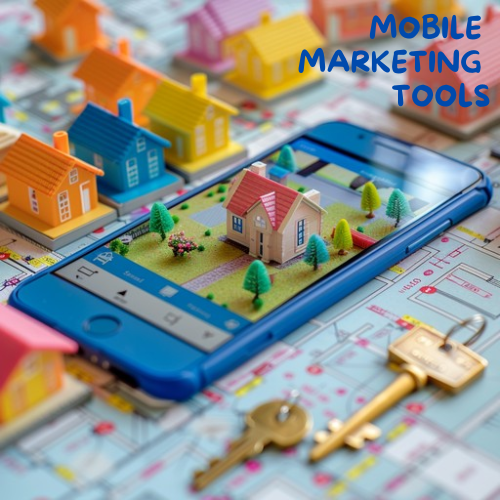
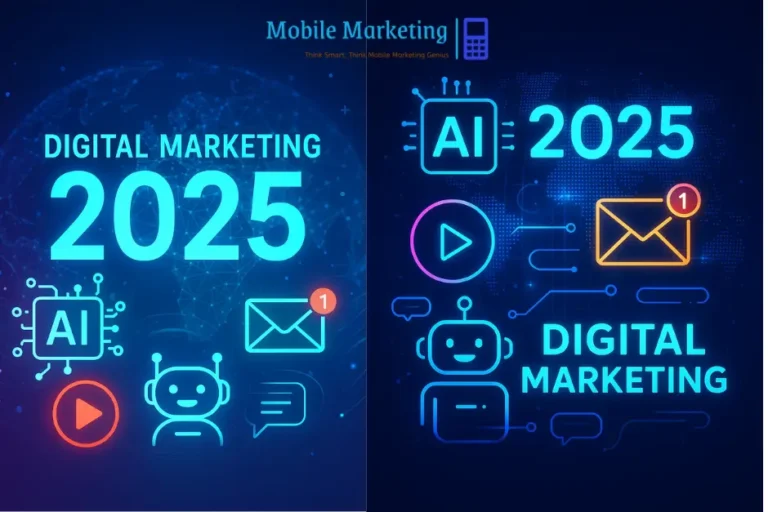
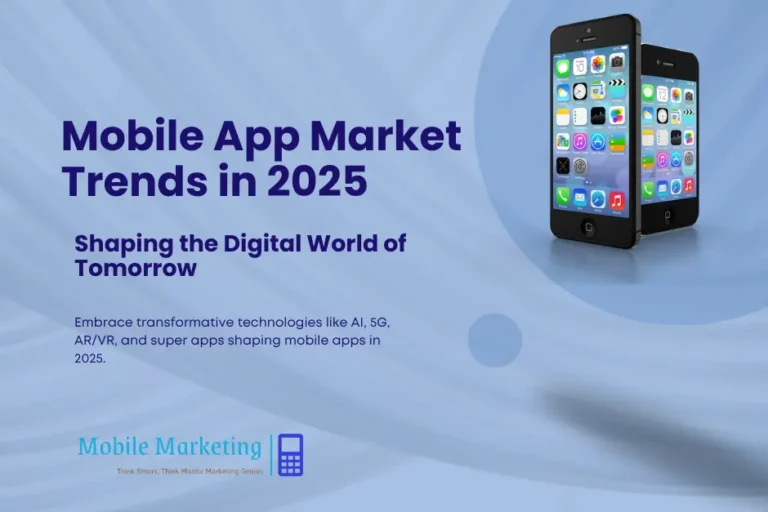

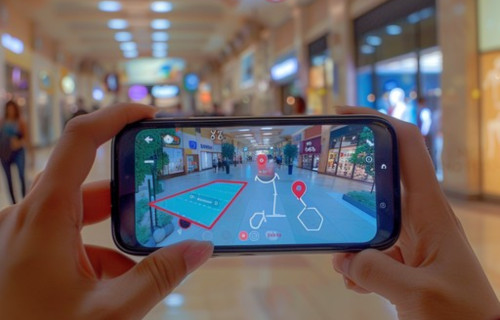
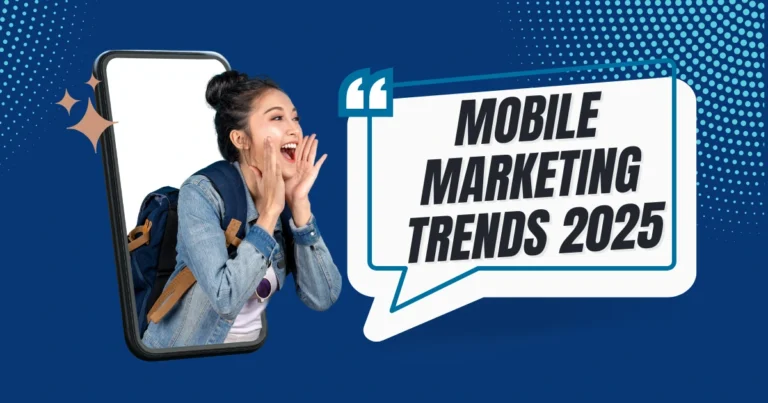
One Comment
Comments are closed.